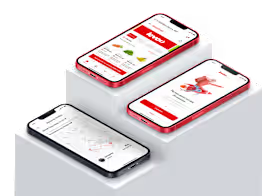
Product UI/UX Design (Mobile + Web)
Contact for pricing
About this service
Summary
Process
What's included
Style Guide
Style Guide is a central document that brings together essential visual guidelines to ensure consistency in project design. It includes color palettes, typography, icons, layouts, and reusable components. These guidelines facilitate team collaboration, promote visual cohesion, and speed up the development process, resulting in a more consistent and enjoyable user experience.
User Flows
User Flow represents the user's journey when interacting with a product. It includes a visual navigation map, connections between screens, task analysis, decision points, and user feedback. This tool helps designers optimize the experience, identifying friction points and ensuring intuitive and satisfying navigation.
Illustrations Premium
These are premium and unique stock illustrations.
Videos Premium
These are premium and unique stock videos.
Components
In Figma, Components are reusable elements that provide visual consistency. They simplify design by enabling replication across multiple parts of the project, ensuring centralized updates and saving time. Components also make it easy to create modular design systems and can be organized into shared libraries for efficient collaboration.
HandOff (DEVMODE)
Is the process of efficiently transferring design to development. Allows developers to inspect layout details, generate CSS code, export resources, and understand design issues through comments. Facilitates a smooth transition between designers and developers, promoting effective collaboration and easing potential errors in implementation.
Example projects
Skills and tools
Web Designer
UX Designer
Product Designer

Adobe Illustrator

Figma

Miro

